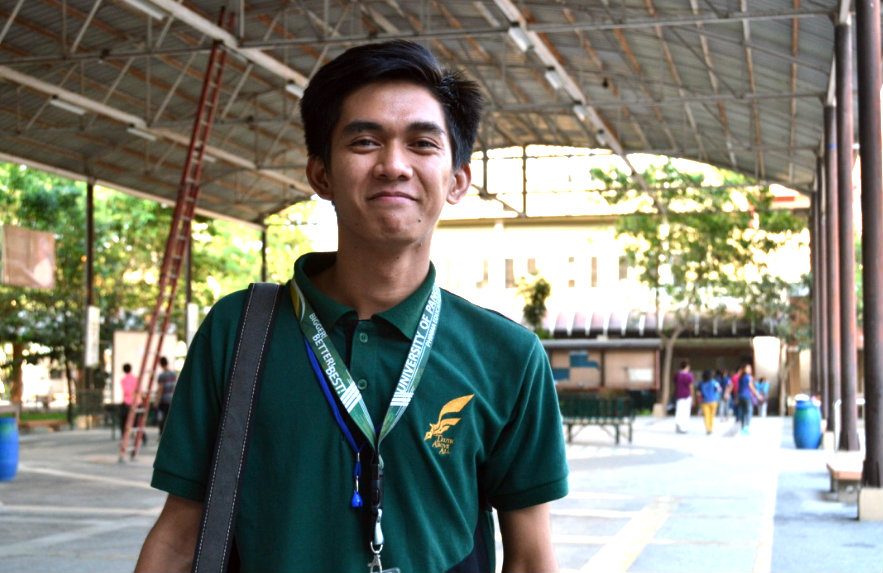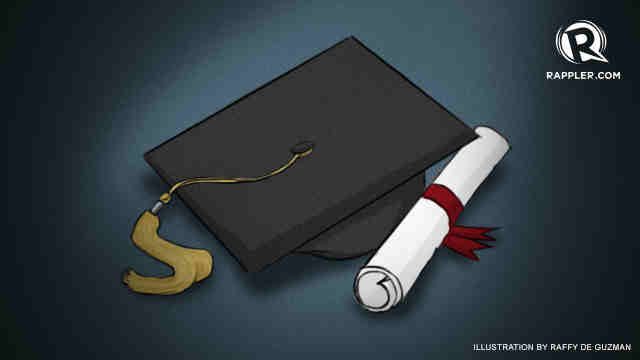SUMMARY
This is AI generated summarization, which may have errors. For context, always refer to the full article.

PANGASINAN, Philippines – Let’s talk about education.
This is the plea of Frankie Cortez, a Political Science student and a youth leader in Pangasinan, to presidential bets facing off on Sunday, April 24 in the last of the Comelec-sanctioned debates.
Cortez, who is expecting to graduate this school year, almost skipped college.
Despite all the medals and his high UP College Admission Test score, options for Cortez to pursue college were bleak. When he was 15 and a fresh high school graduate, instead of thinking about which course to take, Cortez contemplated on taking the detour to contractualization.
“Several people congratulated me when I passed UPCAT. But I didn’t feel anything… My main concern was where will I get the money to fund my education,” Cortez said in Filipino.
At that time, his mother just came home from abroad, with little savings to spare. For them, college is not an option – a bitter reality shared by many other Filipino families. (Read: Cebu poverty through the eyes of the kid in viral photo)
Scholarship
He was at the brink of joining his elder sister in Manila to work at a fast food chain when the University of Pangasinan offered him a scholarship and allowance to boot. It was a feat, not just for him but also for his family, as he is the first among them to step into college.
“It renewed our hope to be able to reach college. Now they look up to me as the person who will help bring the family out of poverty,” Cortez said, smiling.
Despite the scholarship, college still did not come easy, at least financially, for Cortez. Cortez said he still had to work part-time to compensate the extra costs of college education.
“Makikita mo na may problema sa sistema ng edukasyon sa Pilipinas na sabihin natin na hindi lahat ng kabataan ay nakakakuha ng opportunity na makapag-aral,” Cortez said. (I’ve witnessed firsthand the gaps in the education system in which young Filipinos are not provided with equal opportunity to study.)

Cortez believes in the philosophy that education helps preserve the goodness in people. Conversely, he said that improving education could help address the other prevalent societal issues in the country.
“Naniniwala ako na kapag ang lahat ng tao nagkaroon ng sapat na edukasyon, wala na tayong isyu about crimes, wala na tayong isyu about HIV/AIDS, wala na tayong isyu about poverty or delinquent children,” Cortez added. (I believe that if everyone’s educated properly, we won’t have issues on crime, HIV/AIDS, poverty, or delinquent children.)
The story of Cortez is an antithesis to the achievements proclaimed by the administration of Benigno Aquino III in the education sector. Under his administration, budgets for both basic and higher education increased and K-12 system was implemented. Important laws were passed, including the Iskolar ng Bayan Act, and the Unified Student Financial Assistance System for Tertiary Education (UniFAST) Law.
These laws aim to further decrease the high school and college drop-out rates in the country, which have already slightly decreased over the years. (Read: In numbers: elections and education)
As of 2015, there were over 14.5 million elementary students and 7.3 million high school students. Not all Filipino children manage to graduate.
In 2015, the Philippine Statistical Authority (PSA) reported that 1 in every 10 Filipino aged 6 to 24 was out-of-school. This amounts to 4 million Filipinos.
Election issue
Given these figures and the country’s commitment to improve the quality of education, through the Millennium Development Goals, the next president has a lot on his plate to make sure laws and national policies benefit students like Frankie Cortez.
However, this important topic has been overshadowed by all other issues and campaign noise leading to the May 2016 elections.
In the second presidential debate held in Cebu, much has been said about the house rules and bringing notes inside the venue but none were spoken of on the important issues concerning education and health.
With the last leg of the presidential debates set in his hometown, Cortez is hopeful that he will be given a chance to recast the spotlight on education. (Read: Plans and promises: Presidential bets on education)
Cortez is one of the few youth representatives in Pangasinan who will be watching the last presidential debate live.
If given the chance to pose a question at the townhall debate, he said he would ask the presidential bets this: Ano yung educational reforms na plano ninyong gawin sa Pilipinas? Paano ninyo idedefine ang equal right to quality education ng mga mamamayan?
(What are the educational reforms you plan to implement when you become president? How will you define Filipinos’ equal right to quality education?)
The Pangasinan presidential debate, hosted by ABS-CBN and the Manila Bulletin, will be the last opportunity for Filipino electorate to witness the candidates weigh in on pressing issues affecting the nation.
Will the candidates be able to deliver to the expectations and hopes of Cortez and the rest of the nation? – Rappler.com
Add a comment
How does this make you feel?
There are no comments yet. Add your comment to start the conversation.